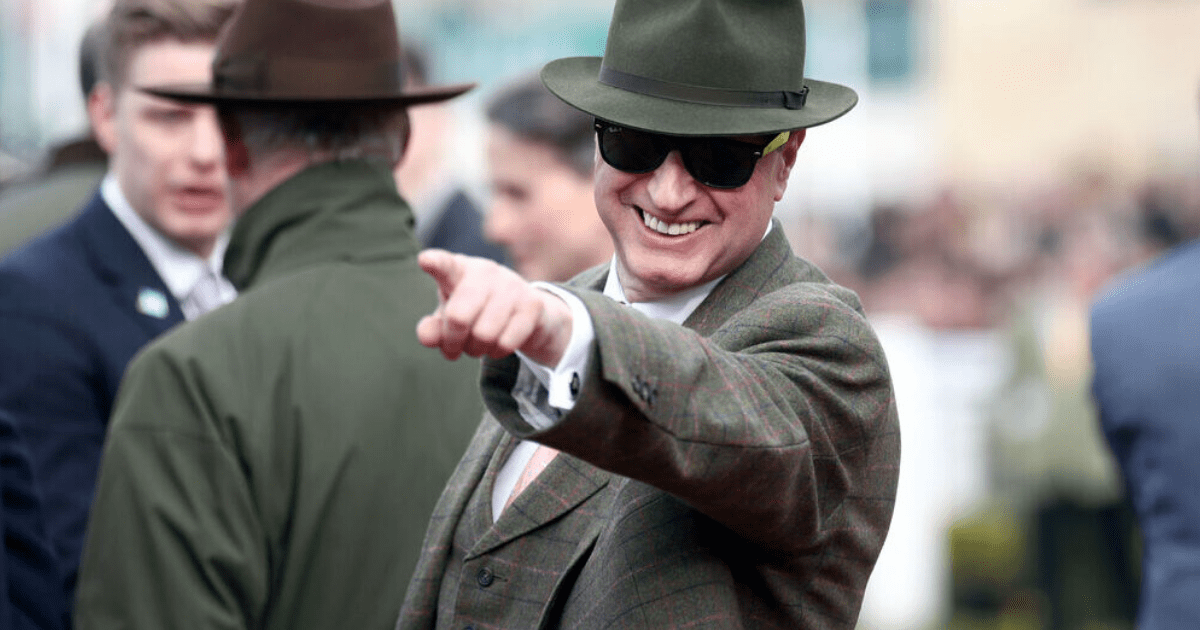Ricci's Decision
RICH RICCI has announced that Gaelic Warrior is set to compete in the Arkle on the opening day of the Cheltenham Festival, deviating from the initial plan to run in the Turners' Novices Chase later in the week.
Reasons for the Change
With soft ground and the chance of more rain during Festival week, Ricci and trainer Willie Mullins have opted for the two-mile Grade 1 race. Marine Nationale's recent withdrawal from the big race also influenced their decision.
Gaelic Warrior's Track Record
Gaelic Warrior has come close in previous Cheltenham visits, finishing second in both the Fred Winter in 2022 and Ballymore Novice Hurdle last year. The team is hopeful he can clinch victory this time.
Confirmation for Lossiemouth
Lossiemouth remains on track for the Mares' Hurdle, with no changes in plans despite speculation of rerouting to the Champion Hurdle following Constitution Hill's absence. Ricci reaffirmed their commitment to the original plan.
Frequently Asked Questions
What is the significance and history of the jockey silks?
The jockey’s sashes are the colorful and pattern garments that are worn during a racing event. Each set is unique to its owner and allows both spectators as well as officials to easily identify each horse during the race. Silks are often a tradition or hold sentimental value for their owners. They can be adorned with a variety colors, patterns, and symbols.
How can I learn to read a racecard?
Understanding the information contained in a racing card is essential for understanding a race, and the horses involved. A racecard contains information about the horse such as its name, age, weight and trainer. It may also include the jockey’s silk color. This data will help you better understand the odds of each horse and make informed decisions when betting. Many racecourses and betting services offer guides to reading racecards as part of their customer service.
What types of horse racing are there in the UK and what is their history?
There are several different horse races that take place in the UK. Most of them fall under two main categories, Flat racing and National Hunt Racing (or jump). Flat racing does not include obstacles and is run on flat tracks from 5 feet to more than 2 miles. National Hunt racing emphasizes both the speed and jumping ability of the horse, with races like hurdles and steeplechases featuring a series of obstacles. These two broad categories have variations like handicaps, conditions, and maidens. Each race has a specific entry requirement and rule.
What are the UK’s ‘Classics in horse racing’?
‘Classics’ in UK horse racing refer to a series of five prestigious races that are traditionally considered the most esteemed contests for three-year-old thoroughbreds. The 2,000 Guineas are the Epsom Derby, The Epsom Oaks and The St. Leger Stakes. Wining one of the Classics is a great achievement for a racehorse. And winning all three races of a gender is rare and historic.
What are the UK’s most prestigious horse races?
The United Kingdom hosts a number of acclaimed horse races that draw audiences from around the world. The Epsom Derby is the most prestigious event, followed by the Grand National, Aintree’s Grand National, and Royal Ascot. These events, which showcase the best of equine ability and provide rich tradition as well as history, have also become social occasions. There are even dress codes for these events and they receive royal patronage.
How are racehorses selected and bred?
Racehorses are usually bred with the specific intention of excelling on the racetrack. Breeders choose sires and mares who have proven racing pedigrees in order to produce offspring that are characterized by speed, endurance and temperament. Thoroughbreds, which are the most common breeds associated with racing in Britain, are closely tracked. Before starting their racing careers, potential racehorses will often undergo a selection process which includes pedigree assessments, physical assessment of conformation, and performance while in training.
Statistics
- The Royal Ascot, held annually in June, draws crowds of 300,000 over its five-day meeting.
- Around 14,000 thoroughbred foals are born each year in the UK with the goal of becoming top racehorses.
- Approximately 6 million people attend horse racing events in the UK each year, making it the second most popular spectator sport in the country.
- The National Hunt racing season in the UK sees approximately 1,000 races with hurdles or fences each year.
- British racing oversees around 1,500 fixtures annually across its 59 racecourses.
- The Grand National at Aintree boasts a prize fund of around £1 million, making it the most valuable jump race in Europe.
External Links
thejockeyclub.co.uk
thejockeyclub.co.uk
britishhorseracing.com
thejockeyclub.co.uk
ascot.com
thejockeyclub.co.uk
How To
How to Train in the UK for a Jockey’s Career
The British Racing School and the Northern Racing College offer foundation courses for aspiring British jockeys. These courses provide education on horse riding, fitness, and care. After completing the foundation course, aspiring jockeys should enroll in an apprenticeship program or conditional training to gain experience. Fitness and weight are essential. To become a jockey, potential candidates must obtain a British Horseracing Authority license. This involves passing tests on racing regulations and practical assessments. The career of a professional jockey is dependent on their ability to maintain a high level of personal and professional fitness.

